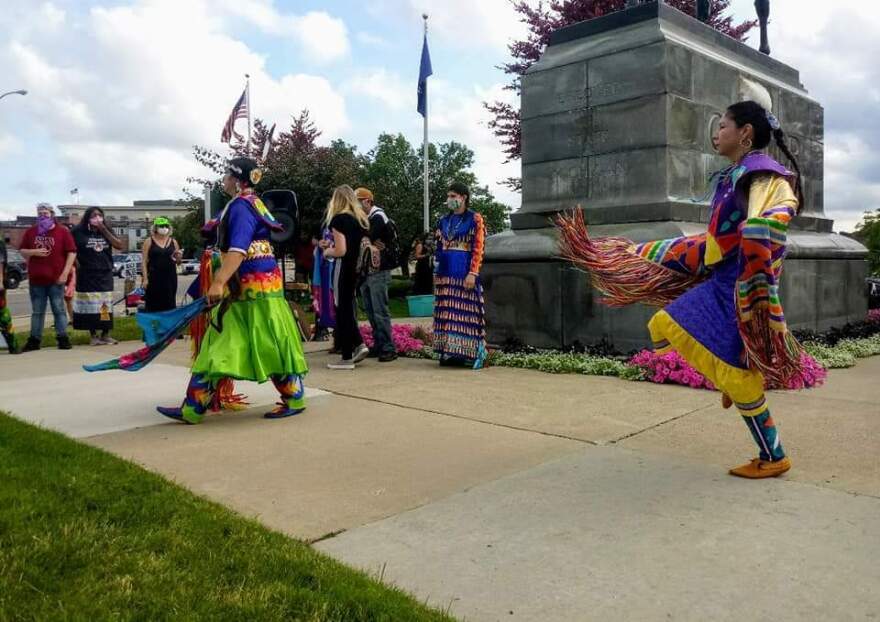Which historical figures deserve a monument? Many Americans are asking that question as the nation continues to reckon with racial injustice in the current moment. There are campaigns across the country to remove public monuments that honor people from America’s past who upheld racist systems, including slavery and the removal of Native people from their ancestral lands. That debate reached the city of Monroe this summer after a petition to remove its downtown statue of George Armstrong Custer received nearly 14,000 signatures.
Custer is often remembered as a prominent Union general in the U.S. Civil War. In later years, he was a cavalry commander who led many campaigns against American Indian tribes. He was famously killed by the Lakota Sioux, Northern Cheyenne and Arapaho forces at the Battle of Little Big Horn, also known as Custer's Last Stand, and the Battle of Greasy Grass. The city is not removing the statue entirely, but has agreed to update the monument to present a more nuanced version of Custer’s past, and acknowledge his role in the violent removal of Native people from their lands.

Graham Denton is a member of the Southern Bands of Cheyenne and Arapaho Tribes. He’s also a chiropractor in Monroe. Denton was one of the 13,800 people who signed the petition, and he has been involved in meetings with the city about what changes will be made to the monument.
Denton says the main source of disagreement revolves around Custer’s involvement in the U.S. Civil War. Custer was an officer for the Union troops, which Denton says is why some residents of Monroe want his monument to stay put. But he also led campaigns for the forced removal of tribes, leading to the massacre of Native people during the American Indian Wars. Currently, Custer’s monument states little information about his involvement in the American Indian Wars. Denton says it is important to include that information as well, even while acknowledging he is considered by many as a Civil War hero.
“It would not do justice to people to say that good people cannot do bad things and bad people cannot do good things. That’s simply untrue, and we should take a look at that absolutely,” Denton said.
The location of a monument impacts how viewers engage with the site. Denton, among others, wants the monument to be removed from its prominent location in downtown Monroe and placed in a museum where viewers could learn historical context about Custer. But those opposed to the monument’s removal says that amounts to erasing history.
“It’s hard for me to understand how putting it in a museum where we go to study history would be erasing that history,” Denton said. “And if anything, coming from a member of a tribe who states that this person massacred us, I would never want people to forget about Custer and what he did."

Denton said he is grateful for the way Monroe is handling the decision to modify the monument. Denton has had meetings with various members of City Council who say they are looking to include general information about the American Indian Wars, in addition to talking about Custer’s personal involvement in the campaigns against Native Americans.
Denton says that he already sees change happening since the petition first was posted. At a recent Monroe County School Board meeting, he says, a resident called for changing the name of Custer Elementary School. Denton hopes that the changes on the monument, and continued conversations about Custer's impact on Native communities, will help educate people in Monroe about the parts of American history that are often glossed over in school.
“Moving forward, I am excited to see what the city does with this. Because in my hopes, there will still be an education for the county on what General Custer represents,” Denton said.
This post was written by Stateside production assistant Catherine Nouhan.
Want to support programming like this? Consider making a gift to Michigan Radio today.





